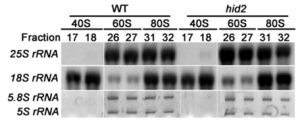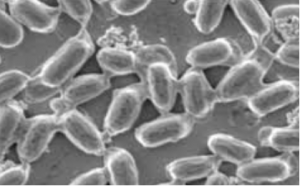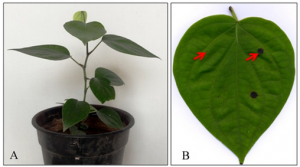|
Nitric oxide negatively regulates abscisic acid signaling in guard cells by S-nitrosylation of OST1
Friday, 2015/01/16 | 08:38:44
|
|
Pengcheng Wang, Yanyan Du, Yueh-Ju Hou, Yang Zhao, Chuan-Chih Hsu, Feijuan Yuan, Xiaohong Zhu, W. Andy Tao, Chun-Peng Song, and Jian-Kang Zhu Significance
Drought stress induces the accumulation of the plant stress hormone abscisic acid (ABA). ABA then quickly activates the protein kinase OST1/SnRK2.6 to phosphorylate a number of proteins in guard cells, resulting in stomatal closure to reduce transpirational water loss. How SnRK2.6 is deactivated and how ABA signaling may be desensitized are unclear. This study found that nitric oxide (NO) resulting from ABA signaling causes S-nitrosylation of SnRK2.6 at a cysteine residue close to the kinase catalytic site, which blocks the kinase activity. Dysfunction of S-nitrosoglutathione (GSNO) reductase causes GSNO overaccumulation in guard cells and ABA insensitivity in stomatal regulation. This work thus reveals how ABA-induced NO functions in guard cells to inactivate SnRK2.6 to negatively feedback regulate ABA signaling. Abstract
The phytohormone abscisic acid (ABA) plays important roles in plant development and adaptation to environmental stress. ABA induces the production of nitric oxide (NO) in guard cells, but how NO regulates ABA signaling is not understood. Here, we show that NO negatively regulates ABA signaling in guard cells by inhibiting open stomata 1 (OST1)/sucrose nonfermenting 1 (SNF1)-related protein kinase 2.6 (SnRK2.6) through S-nitrosylation. We found that SnRK2.6 is S-nitrosylated at cysteine 137, a residue adjacent to the kinase catalytic site. Dysfunction in the S-nitrosoglutathione (GSNO) reductase (GSNOR) gene in the gsnor1-3 mutant causes NO overaccumulation in guard cells, constitutive S-nitrosylation of SnRK2.6, and impairment of ABA-induced stomatal closure. Introduction of the Cys137 to Ser mutated SnRK2.6 into the gsnor1-3/ost1-3 double-mutant partially suppressed the effect of gsnor1-3 on ABA-induced stomatal closure. A cysteine residue corresponding to Cys137 of SnRK2.6 is present in several yeast and human protein kinases and can be S-nitrosylated, suggesting that the S-nitrosylation may be an evolutionarily conserved mechanism for protein kinase regulation.
See: http://www.pnas.org/content/112/2/613.abstract PNAS January 13, 2014; Vol.112; no.2: 613-618
Fig. 1. S-nitrosylation at Cys-137 inhibits the activity of SnRK2.6. (A) Nitric oxide donors GSNO and Cys-NO inhibit the activity of SnRK2.6 in a dose-dependent manner. MBP–SnRK2.6 incubated with indicated concentration of GSNO (Left) and Cys-NO (Right) for 10 min and then [γ-32P]ATP was added to determine the autophosphorylation of SnRK2.6. In the rightmost lane (DTT+), 1 mM DTT was added into the reaction before adding [γ-32P]ATP. (B) GSNO causes S-nitrosylation of SnRK2.6 as detected by the biotin-switch assay. (C) Effects of C-to-S site-directed mutation of the six cysteines on SnRK2.6 activity upon GSNO (50 μM) or DTT treatment. (D) Effects of C137S and C137W mutations on the kinase activity of SnRK2.6. (E) Structure of SnRK2.6 showing the position of Cys-137 (Left) and Trp-137 (Right). Residues E65, H69, L72, K142, D160, F161, and C137 (W137) are shown by sticks. |
|
|
|
[ Other News ]___________________________________________________
|


 Curently online :
Curently online :
 Total visitors :
Total visitors :
(19).png)



















